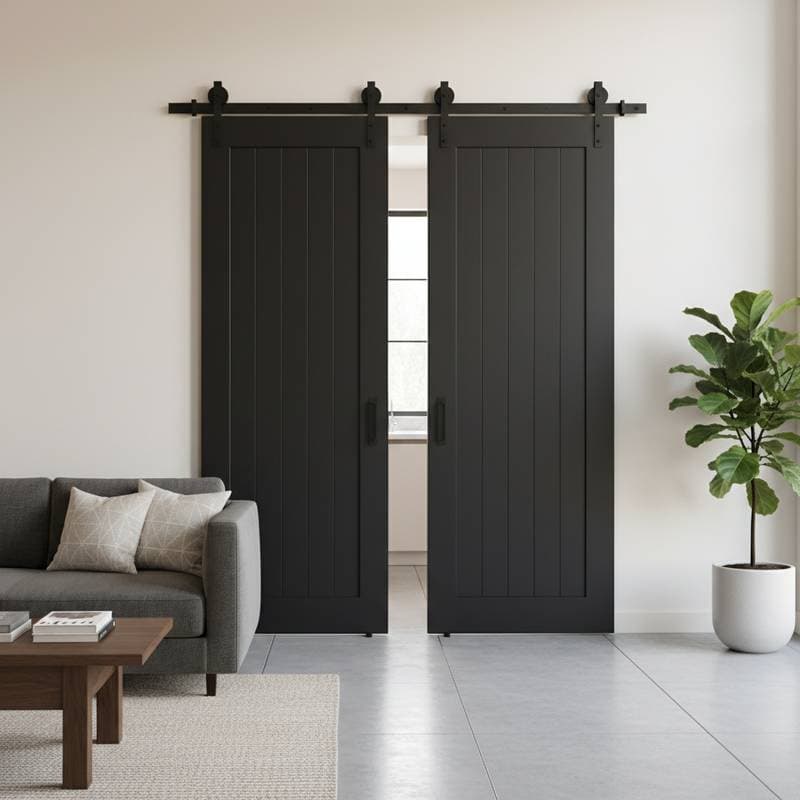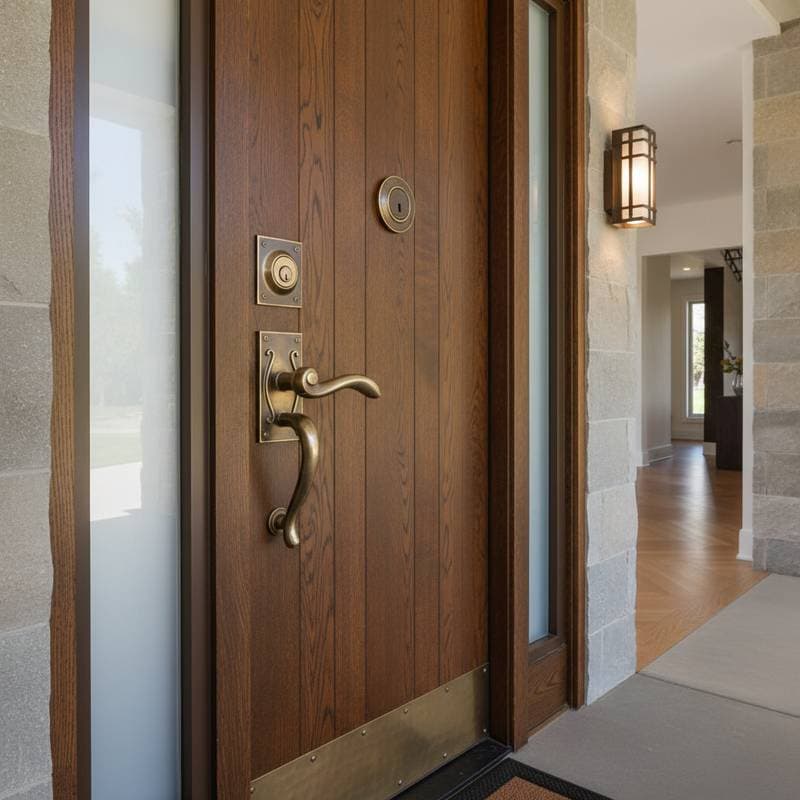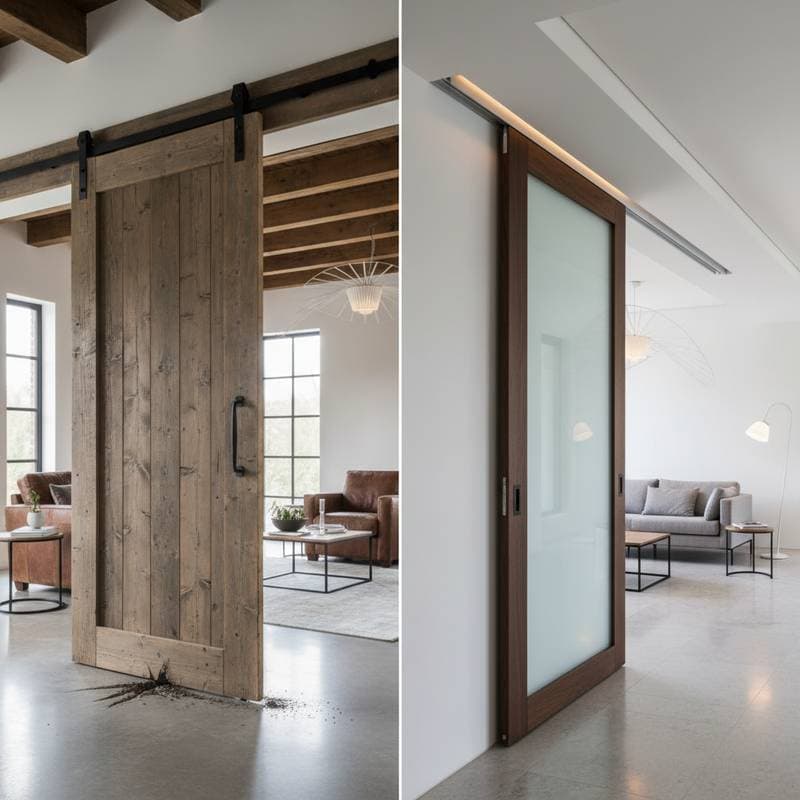Understanding Japandi Style and Brass Hardware
Japandi design draws from Japanese minimalism and Scandinavian practicality to craft tranquil environments. This aesthetic emphasizes clean lines, natural materials, and subtle warmth. Brass hardware fits seamlessly into Japandi interiors, adding a touch of understated luxury without overwhelming the space.
Brass door handles, knobs, and hinges in Japandi style often feature brushed or satin finishes. These treatments reduce shine while highlighting the metal's inherent warmth. Such hardware pairs well with wood doors, stone surfaces, and neutral palettes, enhancing the overall harmony of the room.
Homeowners appreciate brass for its versatility. It ages gracefully, developing a patina that complements evolving decor. In 2025, manufacturers focus on eco-friendly sourcing, making brass a sustainable option for modern renovations.
Key Features of Japandi Brass Hardware
Quality Japandi brass hardware prioritizes functionality alongside form. Handles typically include lever designs for ease of use, while hinges ensure smooth operation. Finishes resist fingerprints and tarnish, maintaining a polished appearance over time.
Materials matter in this style. Solid brass construction provides superior strength compared to coated alternatives. Look for pieces certified for lead-free composition to ensure safety in residential settings.
Customization options allow adaptation to specific needs. Some sets offer adjustable backsets for various door thicknesses. Others include matching escutcheons or rosettes that conceal screw holes elegantly.
Pricing Breakdown for 2025
Costs for Japandi brass hardware vary based on design complexity, brand reputation, and set components. A basic handle set starts at $90, covering a single door with lever handles and standard hinges. Mid-range options, featuring custom engravings or extended warranties, range from $200 to $400 per set.
Premium collections reach $500 to $700, incorporating artisanal craftsmanship or rare finish variations. These higher-end pieces often include privacy locks or multi-point systems for enhanced security.
Installation adds to the total expense. Professional services cost $50 to $120 per door, encompassing drilling, alignment, and adjustments. For projects with multiple doors, bulk discounts may apply, reducing the per-unit fee.
Factors influencing price include origin and certifications. Imported brass from Europe or Asia tends to cost more due to quality controls. Domestic options provide competitive pricing with faster delivery times.
- Entry-Level Sets ($90-$150): Simple levers with basic satin finish; ideal for budget-conscious updates.
- Mid-Tier Sets ($200-$400): Brushed brass with ergonomic grips; suitable for living areas.
- Luxury Sets ($500-$700): Hand-forged details and lifetime guarantees; perfect for statement doors.
Benefits of Choosing Brass in Japandi Designs
Brass hardware delivers several advantages for Japandi enthusiasts. Its clean finish aligns with the style's emphasis on simplicity. Many sets come with warranties covering defects for 10 to 25 years.
Compliance with building codes ensures safe installation. Brass meets standards for fire resistance and load-bearing capacity, providing peace of mind. Durability reduces the need for frequent replacements, saving money over time.
Sustainability stands out as a major benefit. Brass is recyclable, and responsible brands use reclaimed materials. This choice supports eco-friendly practices while maintaining aesthetic appeal.
In multi-door projects, professional installation guarantees uniformity. Experts handle diverse door types, from solid core to paneled designs, ensuring consistent alignment and finish across rooms.
Selecting the Right Hardware for Your Space
Begin the selection process by assessing your current interior. Consider door materials such as oak or walnut, which pair naturally with brass tones. Test samples under your home's lighting to observe color variations.
Determine the hardware type based on usage. Lever handles suit high-traffic areas for accessibility. Knobs work well in bedrooms for a softer touch.
Budget plays a crucial role. Allocate funds for sets plus installation to avoid surprises. Compare brands for value, focusing on those offering return policies or design consultations.
For custom finishes, consult suppliers early. Options like oil-rubbed bronze or antique brass can mimic natural aging while fitting Japandi principles.
Installation Guidance: DIY or Professional?
Installing Japandi brass hardware requires precision to achieve a professional result. DIY suits simple replacements on standard doors. Gather tools including a drill, screwdriver set, and template for accurate hole placement.
Follow these steps for a successful DIY install:
- Remove old hardware carefully, noting screw positions.
- Use the provided template to mark new holes on the door and frame.
- Drill pilot holes to prevent wood splitting.
- Secure the new hardware, testing operation before tightening fully.
- Adjust strike plates for smooth latching.
Complex projects benefit from professional help. Hire certified installers for custom doors or multi-room updates. They ensure code compliance and address issues like uneven frames.
Start small to build confidence. Update one or two doors in key areas, such as the entryway or primary bedroom. Observe how the brass interacts with surrounding elements before committing to a full overhaul.
Maintenance Tips for Longevity
Preserve the beauty of brass hardware through routine care. Wipe surfaces weekly with a soft cloth to remove dust. Avoid abrasive cleaners that could scratch the finish.
For deeper cleaning, use a mild soap solution and lukewarm water. Dry immediately to prevent water spots. Apply a protective wax quarterly to enhance resistance to tarnish.
Monitor for wear, such as loose screws or stiff operation. Tighten components as needed and lubricate hinges with silicone spray. These habits extend the hardware's life, upholding the Japandi commitment to enduring quality.
In humid environments, consider dehumidifiers to minimize corrosion risks. Store spare parts in a dry area for quick repairs.
Integrating Brass Hardware into Your Japandi Home
Brass hardware transforms doors from mere utilities into design focal points. It reinforces the serene atmosphere central to Japandi style. With thoughtful selection and care, this addition fosters a cohesive, inviting space.
The result extends beyond aesthetics. Enhanced functionality improves daily flow, while the material's warmth softens minimalist lines. Homeowners report greater satisfaction in environments that feel both modern and timeless.
Expand gradually for maximum impact. Once initial installations succeed, incorporate matching elements like cabinet pulls or lighting fixtures. This layered approach builds a unified narrative throughout the home, celebrating simplicity and craftsmanship.






